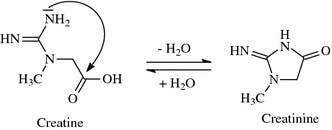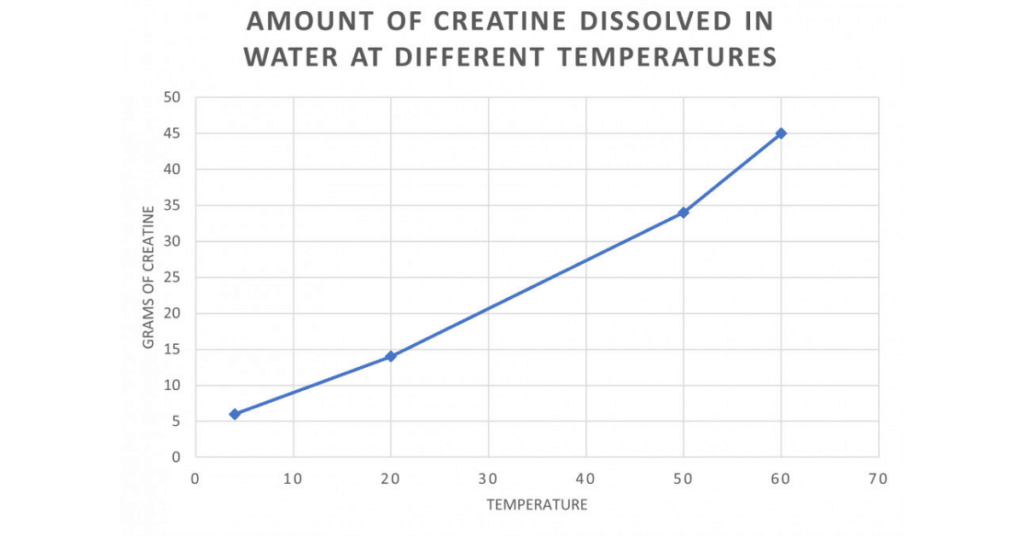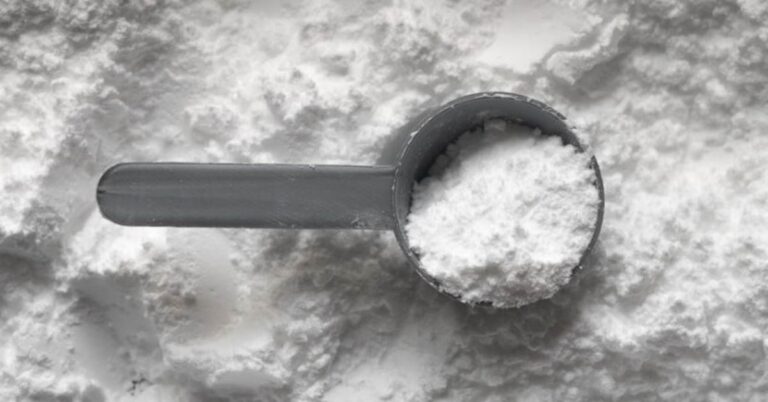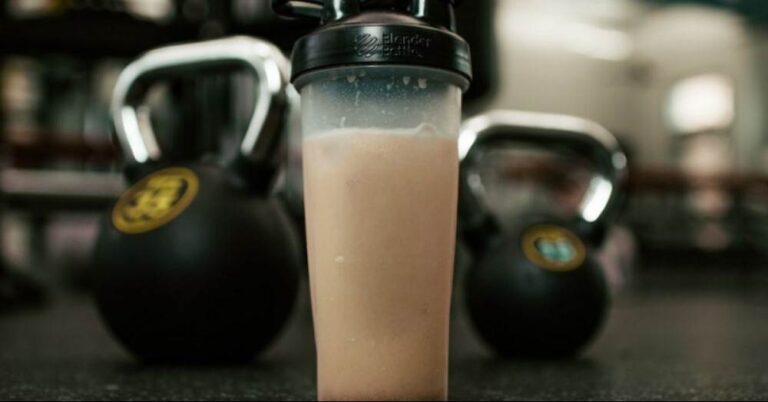Can high temperatures destroy creatine’s effectiveness? Does mixing it in hot coffee or tea make it useless? Can you enjoy a creatine-powered hot chocolate before bed and still get all the benefits of that little 5 grams?
This article will provide science-backed answers on creatine’s stability when exposed to heat. You’ll understand how temperature affects creatine’s structure, solubility, and performance benefits. I’ll also look into proper storage and mixing techniques to preserve creatine’s potency.
Let’s get going…
Excessive heat can cause creatine to degrade but heat alone is not the only factor. When creatine is dissolved in water, it becomes less stable and prone to breakdown. Hot drinks such as tea and coffee are more acidic than creatine’s stable 7 pH level which also leads to the degradation to creatinine.
Adding all three factors together can make creatine supplementation less effective than dissolving in room-temperature water.
Affiliate Disclosure: Please note that some of the links on this page may be affiliate links. This means that if you click on these links and make a purchase, we may earn a small commission, at no additional cost to you. As an Amazon Associate, we earn from qualifying purchases. We only recommend products and services that we believe in and use ourselves. Your support through these links helps us keep the content coming. Thank you for your support!
What Is Creatine?
Creatine needs little introduction. It’s probably the most well-known, well-studied supplement which is produced naturally in the body. It’s taken to boost strength, muscle gains, and exercise performance, and can provide a cognitive boost too.
For more information and background on creatine, its uses and effects see:
Stability of Creatine
Solid Form
Creatine monohydrate powder is very stable and shows literally no signs of degradation even over several years. The method of measuring its degradation is by measuring the levels of creatinine in the compound. Creatinine is the chemical waste product of creatine that is processed by the kidneys.
In a Solution
However, when mixed with liquids, creatine is not as stable due to a chemical reaction called intramolecular cyclisation. Simply put, the creatine molecule degrades to creatinine by closing in on itself to form a ring structure as shown below:

Jäger, R., Purpura, M., Shao, A., Inoue, T., & Kreider, R. B. (2011). Analysis of the efficacy, safety, and regulatory status of novel forms of creatine. Amino Acids, 40(5), 1369-1383.
Impact of Temperature on Creatine
So we already know that creatine is far less stable when mixed with a liquid but what effect will heat have on creatine?
It’s important to differentiate between conditions, like mixing creatine in warm water, versus exposure to extremely high temperatures above creatine’s breakdown point.
Influence of Heat on Creatine Monohydrate
According to this study, creatine monohydrate in solid form starts to dehydrate at about 97-125°C. The likely mechanism for this is the removal of water molecules from creatine’s structure as shown above.
At temperatures of 230°C, intramolecular cyclisation occurs and creatinine begins to form, which we already know is a waste product and is of no benefit to our body.
Creatinine eventually melts and decomposes at 290°C.
Brief heat exposure, such as during cooking, does not instantly “destroy” creatine. But prolonged heating will eventually degrade the creatine.
Keep It Cool
Creatine supplements should be stored in a cool, dry place at a regular room temperature of 15–25°C (59–77°F).
We already know that dissolving creatine in water makes it unstable so the best thing to do is to consume it as soon as possible. If not consumed straight away, it should be stored at a cool temperature to prevent the creatine from degrading to creatinine. A refrigerator provides the perfect storage conditions.
However, this will only slow down the degradation, it won’t stop it completely.
While generally stable as a solid, prolonged high heat can gradually degrade creatine over time. Mixing with a liquid also causes instability so immediate consumption is recommended. Following proper storage guidelines helps preserve its potency and performance benefits.
Why Won’t Creatine Dissolve In Water?
You’ve probably already noticed that grainy settlement at the bottom of your water bottle and wondered why on earth your creatine won’t dissolve?
The issue here is that:
- The water is too cold
- You don’t have enough water to allow creatine to dissolve
The graph below shows an almost linear relationship between water temperature and the amount of creatine dissolved in 1 litre of water. (Data Source: https://www.ncbi.nlm.nih.gov/pmc/articles/PMC3080578/)

On this basis, it makes sense that you should either increase the volume of water you use and/or the temperature of the water. This will allow your creatine to dissolve more effectively
Creatine With Your Coffee?
Many fitness enthusiasts dissolve creatine powder in their morning coffee for convenience. But is the heat and acidic environment damaging to creatine molecules?
Moderate heat from hot coffee is not high enough to instantly “destroy” or decompose creatine. However, the acidic pH of coffee, which ranges from 4.5–6, is lower than creatine’s ideal stability pH of 7.
This lower pH level has been shown to increase the degradation of creatine to creatinine over a short period of time.
In summary:
- Creatine dissolved in a liquid = less stable
- Creatine exposed to heat = more likely to degrade
- Lower, acidic PH = increases degradation
Using all of the evidence above, it makes sense to assume that mixing creatine with coffee is not ideal. By doing so, you are creating an environment that leans towards the breakdown of creatine making it less beneficial.
How About Adding Creatine to Tea?
What about dissolving creatine in hot tea? Does tea’s chemistry and processing impact creatine’s structure like coffee does?
How Tea Interacts with Creatine
Adding creatine to your tea can make it more palatable and an easy way to get your daily dose but there is a variation in the TYPE of tea and how it affects your creatine effectiveness.
As we’ve established earlier, the pH of the liquid has an effect on the stability of creatine.
- Creatine is most stable at a pH of 7.
- Black tea has a pH of around 5-5.5.
- Green tea is around pH 7-10.
- Chamomile and mint teas have a pH of around 6-7.
This suggests that the best type of tea to add creatine to would be green tea, chamomile or mint tea as their pH is closest to the optimum for creatine stability.
However, bear in mind that:
- Creatine dissolved in a liquid = less stable
- Creatine exposed to heat = more likely to degrade
Mixing Creatine in Hot Drinks
While research shows that an increase in temperature can increase creatine’s solubility, there are a few things to consider:
- Excessively hot temperatures from boiled water could potentially degrade creatine over time. Warm, not boiling water will still allow creatine to dissolve with a lesser chance of degrading.
- Acidic drinks like coffee and some teas may cause the breakdown of creatine to creatinine, reducing its effectiveness.
- Creatine mixed into a liquid causes it to become less stable with an increased chance of breakdown. It is recommended to consume immediately to get the most benefit from the creatine.
Why Does Creatine Keep You Awake?

Sleep is important to a number of body and brain functions. One of the main functions of sleep is to allow our body to rest and repair itself. For example, the glymphatic system becomes more active during sleep. This system helps clear away waste products, including proteins associated with neurodegenerative diseases like Alzheimer’s.
This, and other activities like dreaming, require energy. Creatine supplementation has been reported to increase stored creatine in the brain as well as muscles.
An increase in brain creatine stores provides a more readily available energy source for brain function and cell repair while asleep. Logically, this would lead to a reduced need for sleep, making it more difficult to fall asleep or causing you to wake up earlier than usual.
Creatine also increases water retention in the muscles. This can lead to an increased fluid intake and the knock-on effect of needing to pee more, particularly during the night. Another reason for disturbed sleep!
Which Type of Creatine Should I Use?
Creatine is sold in a number of forms. There are powder, liquid and serums and even creatine gummies.
We already know that creatine is less stable in a liquid and more likely to breakdown so it makes sense then that monohydrate powder would be the better option for anyone choosing a creatine supplement.
Monohydrate powder is my preferred choice. Aside from the extensive research into its effectiveness,, it’s far cheaper than the alternatives so it’s a no-brainer.
Key Takeaways
- Stability of Creatine: Creatine monohydrate in solid form is highly stable and doesn’t degrade over time. However, when mixed with liquids, creatine’s stability reduces due to intramolecular cyclisation, leading to degradation into creatinine.
- Impact of Temperature: Creatine starts to dehydrate at temperatures between 97-125°C and begins to form creatinine at 230°C. Prolonged high heat can degrade creatine, but brief exposure to heat (such as in cooking) doesn’t instantly destroy it.
- Proper Storage: Creatine should be stored at room temperature (15–25°C), and once dissolved in water, it should be consumed as soon as possible or stored in a refrigerator to slow down degradation.
- Dissolving Creatine: Creatine doesn’t dissolve well in cold water. Increasing the water’s temperature or volume can enhance solubility, but boiling water may cause degradation.
- Creatine in Coffee: Dissolving creatine in hot coffee won’t instantly destroy it, but the acidic pH of coffee can increase its degradation into creatinine, making this mixing method less ideal.
- Creatine in Tea: The type of tea matters for creatine stability. Green, chamomile or mint teas are best, as their pH levels are closest to the optimum for creatine stability. Black tea may be less ideal due to its lower pH.
- Choosing the Right Form: Creatine monohydrate powder is the preferred choice for supplementation, as it is more stable and cost-effective compared to liquid forms.
Overall, proper handling, mixing, and storage of creatine can preserve its benefits, and choosing the right form and method of intake is essential to maximizing its effectiveness.
Common Questions About Creatine and Heat
How Does Heat and Mixing with Hot Drinks Affect Creatine’s Effectiveness?
Q: Can I mix creatine with hot coffee or tea without losing its effectiveness?
A: While mixing creatine with hot coffee or tea won’t instantly destroy it, it’s essential to note that the acidic pH of coffee and the temperature may increase its degradation into creatinine, making this mixing method less ideal. The type of tea also matters, with green, chamomile, or mint teas being better options due to their pH levels. For optimal stability, mix creatine with warm (not boiling) water and consume it immediately.
What Are the Best Practices for Storing and Dissolving Creatine?
Q: How should I store and dissolve creatine to ensure its potency?
A: Creatine monohydrate in solid form should be stored at room temperature (15–25°C). Once dissolved in water, it should be consumed as soon as possible or stored in a refrigerator to slow down degradation. Creatine doesn’t dissolve well in cold water; increasing the water’s temperature or volume can enhance solubility, but boiling water may cause degradation. Using creatine monohydrate powder is more stable and cost-effective compared to liquid forms.
Can I Have Creatine-Powered Hot Chocolate Before Bed and What Type of Creatine Should I Use?
Q: Can I enjoy a creatine-powered hot chocolate before bed and still get all the benefits? Which form of creatine is best for supplementation?
A: You can enjoy creatine-powered hot chocolate, but keep in mind that excessive hot temperatures could potentially degrade creatine over time. It’s best to use warm, not boiling water for mixing. Regarding the type of creatine, monohydrate powder is the preferred choice due to its stability and cost-effectiveness. Liquid creatine is less stable and more likely to break down, making powder the more recommended option.
See Also:
What are Supplements (And Why Do They Matter?)
Why Is Creatine Considered Natural? (EXPLAINED!)







